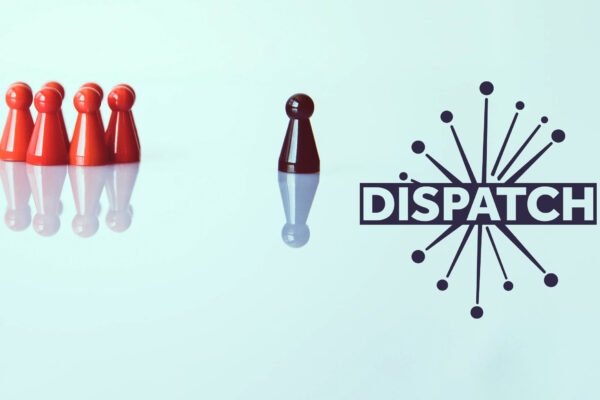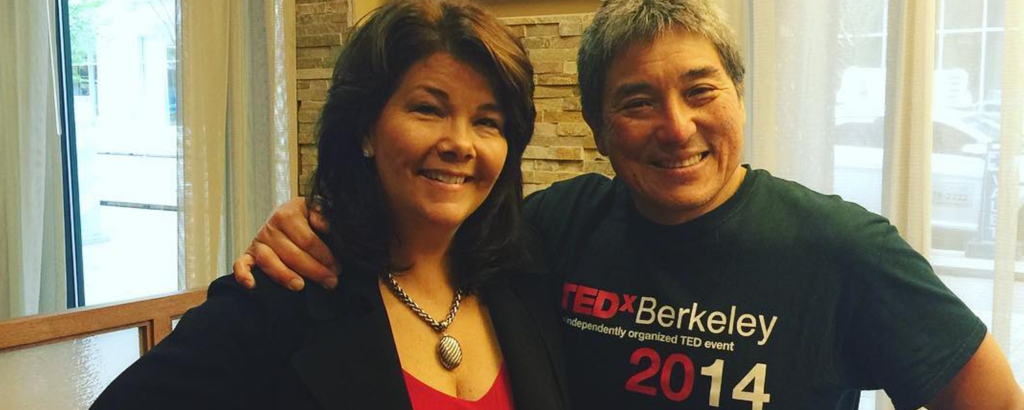Kathleen Lucente and I sat down with evangelist, brand ambassador, thought leader, social media guru, author (is this list of titles long enough, yet?), speaker and hockey fan Guy Kawasaki. Guy was in town for SXSWedu, where he moderated several panels.
The Canva evangelist has been coming to the education track of the festival for several years, and if you haven’t seen his speech at the 2015 edition, I highly recommend it. A couple of weeks ago, we caught up with Guy downtown, where he was holding his responses to our questions hostage for a plate of La Barbecue pork ribs. We acquiesce to your demands, Guy. We acquiesce.
We asked him all kinds of questions about South by, what he sees when he’s traveling, his opinions on thought leadership and startup funding and much more. Below, we’ve compiled a narrative of Guy’s thoughts on various aspects of a public relations campaign timeline.
For Guy, it comes down to one simple rule.
Have a good product. The biggest booth at SXSW can’t buy you a good product. But if you have a booth and a great product, well… you’re in business, as they say.
“I have to say, I don’t understand the whole party thing,” Kawasaki said. “I don’t think they’re gonna sell one more phone because they spent $2 million on a party. I just don’t get it. I guess it’s branding… It’s kind of like an arms race. Who throws the best party makes you pick which phone to buy? Good luck with that.”
Now that we’ve established the necessity for a good product (as Guy said, “Duh!”), it needs to be marketed. We in the public relations world start talking about earned media, but Guy has an alternative approach to that, as well.
“I have to say, I’m not convinced being in Mashable or The Verge or TechCrunch matters that much anymore, because there are 30 stories a day,” he said. “And so for one day your website gets 50,000 visitors instead of 5,000, and two days later you’re back at 5,000, because you were one of 30 articles that day, and the next day there are another 30.”
Say, for instance, your target audience for your product is millennials. Your targets shouldn’t just be traditional news media (though we contend such publications are still vital because they’re great resources, are necessary to read and have essential brand-building value), but should incorporate other forms of earned media like YouTube’s Marques Brownlee, who reviews tech products for more than 3 million subscribers.
“If I were a consumer goods company and I had a choice of Marques Brownlee reviewing my product or the Wall Street Journal, I would choose Marques Brownlee,” Kawasaki said. “I really think he can move the needle, whereas I don’t know who reads the Wall Street Journal on Thursday, but it’s not a lot of millennials.”
Now it’s time to start pitching venture capital firms, perhaps the most nerve-wracking step in the process for startups and their executives. But it doesn’t necessarily have to be. The rise of crowdfunding, Kawasaki said, provides an alternative approach to traditional fundraising that can provide multiple advantages not found in traditional VC funding rounds.
“In many ways, [crowdfunding] is superior to venture capital. Venture capital is a six-to-nine month process, best case you have to suck up to dozens if not hundreds of companies. And you obviously are selling a piece of your company off, so now you have shareholders, which is a whole other can of worms. Whereas with Kickstarter or Indiegogo, conceptually those people who paid $75… they’re real customers, they’re not venture capitalists betting somebody else’s money. This is somebody betting their own $75, which is ultimately harder to get.”
Stay tuned for more expert opinions from Guy Kawasaki on Red Fan’s Facebook, Twitter and Instagram.





